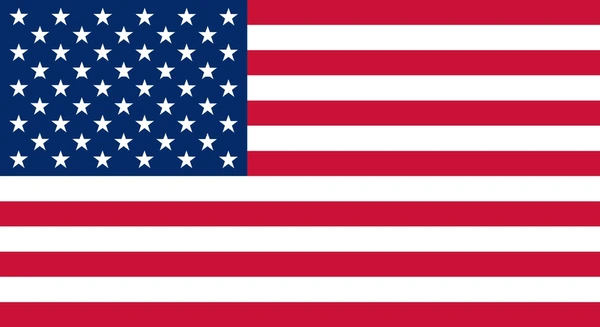5 DAY FULL CUSTOM RUSH

RESTO Athletic Glossary of Fabric Terms
Your comprehensive guide to understanding athletic fabric terminology, construction methods, and textile processes. Ready to explore our fabrics? Browse our Fabric Collection.
59 total terms
Abrasion
The weakening of material by rubbing against another surface. Often seen at the seams during stone wash or sand wash processes.
Absorbency
The ability of a fiber to take up moisture from the body and the environment.
Antipill/Pill Resist Fleece
The fibers in Pill Resist Fleece are twisted together more tightly, packed closer together to reduce pilling.
Backing
Fabric joined to wrong side/backside of garment or garment area: typically for reinforcement or to eliminate grin through.
Blend
A yarn obtained by combing two or more different fibers in the yarn-making process.
Broken Stitches
Stitches in a seam that have been severed by hand, stress, or a machine.
Bruise
An area of fabric damaged by impact or pressure.
Brushed
Knit or woven fabrics of wool, cotton or synthetic fibers that have been brushed or napped to produce a flannel-like hand, sometimes called "sueded" or "peached".
Cadet Collar
A small, narrow collar similar to and named for the collars worn by the cadets at West Point. The zipper will not go up to or close at the top of a 'cadet' collar'.
Colorfastness
Ability of color to remain unchanged throughout the useful life of article. Conditions that affect color fastness include: sunlight, laundry procedures, dry cleaning perspiration, various pollutants in the atmosphere, salt water, swimming pool chlorine and others.
Cover Stitch
Stitch covering the seam on the inside of a garment.
Denier
The international system for numbering of silk and man made filament yarns and fibers. Low numbers represent finer sizes; higher numbers, heavier yarns.
Digitizing
The act of creating computer generated embroidery files.
Double (2) Needle
2 rows of stitching along the seam on the face of the garment.
Double Knit
A fabric knit on a two-bed knitting machine (a knitting machine with two opposing sets of needles) which has the same appearance on both sides. Twice as much yarn is incorporated into double knit fabrics as into comparable single knits. Double knit fabrics are more stable than single knits. They do not run, and have excellent draping qualities.
Drape
The flexibility and suppleness of a fabric; the way it falls when hung or worn in finished form.
Fibers
The smallest part of the fabric. They are fine hairlikes substances, categorized as either natural or man made.
Finishing
Additional treatments to fabrics needed before use (i.e., A special brushing machine is required to make the fuzzy surface found on flannel fabrics).
Flatback Mesh
A double polyester knit fabric consisting of an open mesh layer with a poly layer behind to make it flatback. Provides the breathability of mesh without showing any skin.
Fleece
A knit fabric made by cutting and brushing the loops formed on the backside of a jersey knit.
Gauge
A term used to describe the closeness of knit stitches. Gauge is the number of needles in a measured space on a knitting machine. Higher-gauge fabrics (those with more stitches) are made with finer needles; lower-gauge fabrics are made with coarser or larger needles.
Hand
A quality or characteristic of fabrics perceived by touch - silky, soft, cottony, firm, drapable, fine.
Hydrophilic
Water loving - absorbs moisture readily (ie. cotton).
Hydrophobic
Water hating - non absorbent fabric and quick drying (ie. microfiber/synthetic fabric) - associated with performance moisture transfer fabrics and products.
Interlock
Fine gauge knit fabric produced by interlocking (or interknitting) stitches on a circular knitting machine. Similar to jersey except both the front and back look identical.
Jersey Knit
Generic term for a plain knitted fabric. The most basic knit on a machine with only one set of needles, which all face the same direction. As a result, jersey fabrics have a smooth face with a vertical grain on the right side of the fabric and a widthwise grain on the backside.
Knits
Produced by hand or on knitting machines by the interlooping of yarns. Common knit fabrics are jersey, interlock, and rib knit.
Microfiber
Yarns of less than one denier per filament used to create fabrics with inherent properties of wind and water-resistance.
Nylon
Generic term for man made fiber made of a long chain of synthetic polyamides extracted from coal and petroleum. High strength, abrasion, and crease-resistance, quick drying, washability, resistance to mildew, moths, and chemicals, weight either a silky or dry hand.
Piece-Dyed
The dyeing of the fabric after it is woven or knitted. The most common dye method.
Pilling
The formation of groups of short or broken fibers on the surface of the fabric tangled together in the shape of a tiny ball called a pill.
Pin Dot Mesh
Knitted fabric with tiny dot openings that provide excellent breathability and popular for use in active and sport uniform end use.
Pique Knit
A textured fabric with a honeycomb or waffle-like appearance knit on a two-bed knitting machine.
Ply
Describes the number of single yarns twisted together to form ply yarn.
Poly Spandex
Stretchy fabrics made from Polyester and Spandex fibers that are popular in custom fabric printing. Also popular for recreation and active sports for comfort and ease of motion.
Polyester
A strong durable synthetic fabric with high strength and excellent resiliency. Low moisture absorbency allows the fabric to dry quickly.
Raglan
Shoulder seam construction that follows the natural contour of the shoulder - seam/sleeve is stitched under the arm and runs up from the armpit to the neck.
Recovery
The ability of a fabric to stretch and return to its original shape.
Reverse Cover Stitch
2 or 3 needle stitch that covers the seam on the face of the garment. Usually a reverse cover stitch is used to create a design or surface interest.
Rib
Knitted rib fabric has wales running lengthwise on both sides and is made with a rib stitch (it looks like a file/ie. lines). It is typically more elastic than fabric knitted with a plain stitch.
Ring Spun Cotton
The yarn that is created for Ring Spun Cotton is spun in a way that produces stronger, longer strands that are extremely soft and free from the rough texture of standard raw cotton. The process also yields longer staple yarns which reduces pilling and produces softer and durable material.
Salvage
Lengthwise edges of woven fabric.
Serge
Overlock stitch that finishes the seam or raw edge. Sometimes referred to as an 'underwear' stitch.
Snag Resist
A fabric constructed to resist snagging, ripping, or tearing when rubbed against a rough surface. Snag resistant fabric is extremely durable for repeated wear.
Spandex
A generic name for manmade fibers composed largely of segmented polyurethane. Good stretch and recovery, strength and abrasion-resistance, resistance to body acids. Spandex is always used in combination with another fiber such as nylon or cotton. Lycra is DuPont's version.
Spun Poly
Polyester Fibers are spun together using a spinning which forms long, continuous threads that are knitted together. Spun Poly is extremely durable and has a softer and cotton feel.
Staple Yarns
Staple or spun yarns are produced from short length fibers called staple and bound together by twisting. Often used in athletic products.
Tackle Twill
Fabric that is cut into letters and sewn onto a garment.
Topstitch
A row of decorative stitching typically along the seam on the face of the garment. Topstitching is typically a design detail and has no construction.
Track Collar
Stand up collar with zipper going up to and closing at top of collar. Most Full Zip and 1/4 Zip styles sold for Athleisure have 'track collars'.
Triple (3) Needle
3 rows of stitching along the seam on the face of the garment.
Two (2) End Fleece
2-end fleece has a Face Yarn and a Backing Yarn. The yarn count is typically coarser (larger) than a 3-end fleece.
Warp Knit
Basic weaving term for yarns in fabric that run parallel to the salvage (non-raveling edge).
Weight
A description or classification of fabrics by weight in ounces per yard.
Wicking
The ability of a material to disperse or spread moisture through a given area, vertically or horizontally; capillary action in material.
Woven Fabrics
Made by interlacing two sets of yarns at right angles to each other. The lengthwise yarns are known as warp yarns while the width wise yarns are known as filling yarns.
Wovens
Produced on machines that weave "fill" yarns back and forth through the "warp" yarns. There are three basic weaves from which all woven fabrics derive: twill, satin, and plain.
Yarn Count
An international system for defining the thickness of the yarn. Low numbers represent heavier yarns. Higher numbers represent finer yarns.
Yarns
Continuous threadlike strands composed of fibers twisted together.

